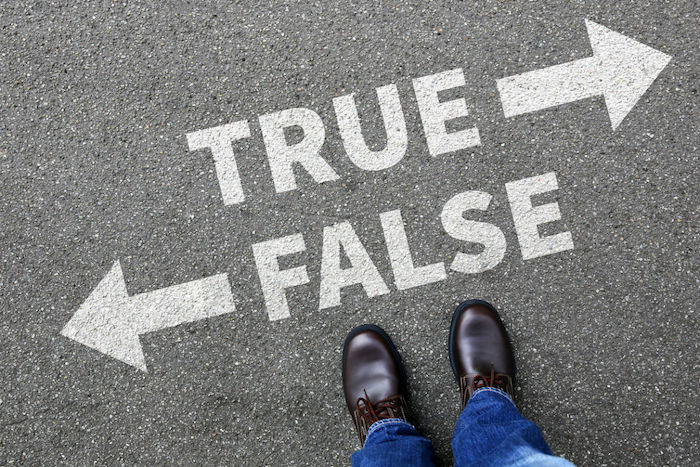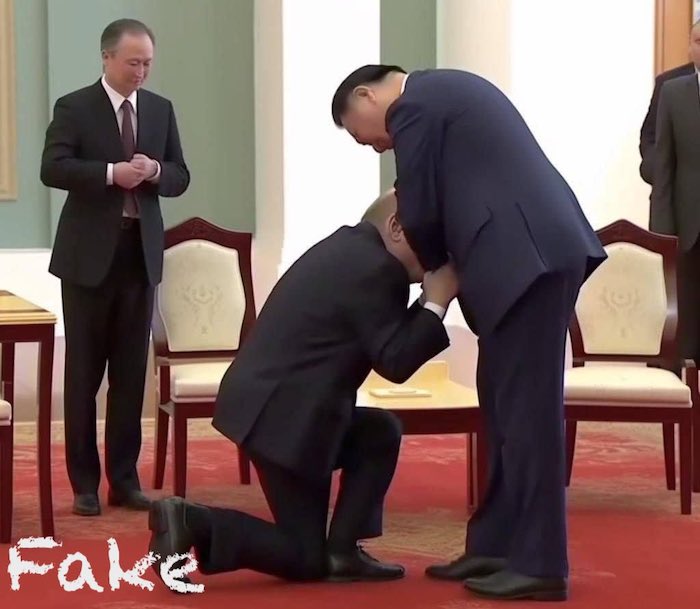Discerning Truth from Fiction: A Comprehensive Guide to Identifying Fake News and Misinformation Online

Introduction
In the digital age, the internet has become a primary source of information for many people. However, this wealth of information also presents the challenge of misinformation. With false information spreading rapidly, distinguishing fact from fiction has become increasingly difficult. This article will address the various ways misinformation is disseminated online, explore the realm of deepfakes, provide practical tips for verifying the accuracy of online information, and offer guidance on how to avoid falling prey to digital deception.
The Spread of Misinformation Online
Deepfakes and Their Impact
Deepfakes are a relatively new form of misinformation that involves using artificial intelligence (AI) to create highly realistic manipulated images, videos, or audio recordings. By combining and superimposing existing images or videos, AI algorithms can generate new content that appears to depict someone doing or saying something they never actually did. Deepfakes can be used to create fake news, impersonate public figures, or damage someone’s reputation. According to the blog post, during a state visit by Chinese leader Xi Jinping to Russia, a computer-generated image depicting Russian President Vladimir Putin kneeling and kissing Xi’s hand went viral on social media. The image was so convincing that some viewers believed it to be a genuine occurrence. However, it wasn’t real. There are many incidents like this one that can be created using AI and other tools.

While deepfakes can be incredibly convincing, there are often subtle clues that they are not genuine, such as inconsistencies in lighting, odd facial movements, or audio that does not match the video. As technology advances, deepfakes are becoming more difficult to detect, making it even more critical for individuals to be vigilant and knowledgeable about this form of misinformation.
The Mandela Effect: Collective False Memories
The Mandela Effect refers to a phenomenon where a large number of people remember an event or fact differently than the documented reality. Paranormal researcher Fiona Broome is credited with creating the term to describe the popular belief that Nelson Mandela, the former President of South Africa, died in prison during the 1980s. In reality, Mandela was released in 1990 and passed away in 2013.
The Mandela Effect is attributed to a combination of factors, including the fallibility of human memory, the influence of popular culture, and the tendency for people to conform to others’ beliefs. Some examples of the Mandela Effect include misremembered movie quotes, altered brand logos, and discrepancies in historical events.
The convergence of deepfakes and the Mandela Effect creates a unique challenge in discerning truth from fiction. With the increasing prevalence of deepfakes, it is possible that collective false memories could be exacerbated or even created intentionally. For example, a deepfake video of a historical event might be shared widely on social media, causing people to misremember the event or believe that it occurred differently than documented.
Conversely, the Mandela Effect could contribute to the believability of deepfakes. If people already have false memories or misconceptions about certain events or facts, they may be more likely to accept a deepfake that aligns with their misremembered version of reality.
Misinformation on Social Media
Social media platforms have become fertile ground for the dissemination of misinformation. Their algorithms often prioritize engaging content, which can lead to the amplification of sensational or misleading stories. Factors that contribute to the spread of misinformation on social media include:
- Echo chambers: People tend to follow and engage with others who share their beliefs, leading to the creation of online communities that reinforce existing opinions and potentially amplify misinformation.
- Emotional appeal: Misinformation often plays on emotions such as fear, anger, or surprise, making it more likely to be shared and engaged with by users.
- Confirmation bias: People are more likely to believe and share information that aligns with their pre-existing beliefs, even if it is not accurate.
- Lack of media literacy: Many social media users may not have the necessary skills to critically evaluate the information they encounter, making them more susceptible to misinformation.
Understanding Misinformation and its Sources
Defining Misinformation
Misinformation is defined as information that is intentionally or unintentionally spread and is false or misleading. It comes in various forms, including fake news articles, manipulated images, and videos. The proliferation of social media platforms has made it easier than ever for misinformation to spread rapidly, as people share, like, and comment on stories without verifying their accuracy.
Common Sources of Misinformation
- Fake news websites: These sites deliberately publish false stories or conspiracy theories, often with sensational headlines, to generate traffic and ad revenue.
- Social media: Misinformation can be shared by individuals or groups with an agenda or unintentionally by people who believe the information is accurate.
- Bots and trolls: Automated accounts or malicious individuals may spread false information to sow discord or manipulate public opinion.
- Satire and parody: Sometimes, people mistake satirical or humorous content for real news.
Verifying Information Online
Strategies for Verifying Information
- Check the source: Is the information coming from a reputable news organization or a known fake news site? Look for an “About Us” section on the website to learn more about its mission and credibility.
- Examine the author: Investigate the author’s background and credentials. Are they an expert in the field or a journalist with a history of accurate reporting?
- Look for evidence: Does the story provide verifiable facts, data, or sources? Can you find other reputable sources that confirm the information?
- Check the date: Sometimes, old news stories are shared as if they are current events. Make sure the information is still relevant and accurate.
- Read beyond the headline: Sensational headlines can be misleading. Read the entire article to understand the full context and check for any inaccuracies.
- Verify images and videos: Use reverse image search tools like Google Images or TinEye to find the original source of an image. For videos, look for signs of manipulation, such as unnatural movements or inconsistent audio.
Tools and Resources for Fact-Checking
- Fact-checking websites: Websites like Snopes.com, FactCheck.org, and PolitiFact.com are dedicated to investigating and debunking claims made in the media, politics, and online content.
- News literacy resources: Organizations like the News Literacy Project and First Draft provide educational materials and training to help individuals develop their news literacy skills and spot misinformation.
- Browser extensions: Tools like NewsGuard and Fake News Debunker can be added to your web browser to provide credibility ratings and warnings for potentially unreliable websites.
- Reverse image search: As mentioned earlier, tools like Google Images and TinEye can help you trace the origin of an image and determine if it has been manipulated.
- Social media verification: Platforms like Facebook and Twitter have introduced features to label or flag potentially misleading content. However, it’s essential to remain vigilant and not rely solely on these automated systems.
Avoiding Misinformation and Promoting Digital Literacy
Proactive Strategies for Avoiding Misinformation
- Diversify your sources: Follow various news sources with different perspectives to better understand events and issues.
- Be cautious with social media: Recognize that social media platforms can amplify misinformation and be cautious when consuming news through these channels.
- Limit your reliance on algorithms: Instead of relying solely on algorithm-driven news feeds, actively seek out reputable sources and independent fact-checkers to stay informed.
- Improve your media literacy: Develop your critical thinking skills and knowledge of media production to better evaluate the credibility of the information you encounter.
- Educate others: Share your knowledge with friends, family, and colleagues to help them avoid misinformation and promote a more informed online community.
Encouraging Media Literacy and Critical Thinking
- Promote media literacy education: Advocate for the inclusion of media literacy in school curricula to equip future generations with the skills necessary to navigate the digital world responsibly.
- Encourage critical thinking: Foster an environment that values questioning, skepticism, and independent research to assess the credibility of information.
- Share resources and tips: Provide friends and family with resources and tools to help them evaluate the accuracy of the information they encounter online.
Conclusion
Being able to discern fact from fiction online is an essential skill in today’s digital world. By understanding the various ways misinformation is spread, becoming familiar with deepfakes, and adopting practical strategies for verifying and avoiding false information, we can be more confident in our online interactions and help combat the spread of misinformation. It is crucial to approach online content with a critical eye, use available tools and resources to ensure accuracy, and share knowledge with others to foster a more discerning and informed online community.